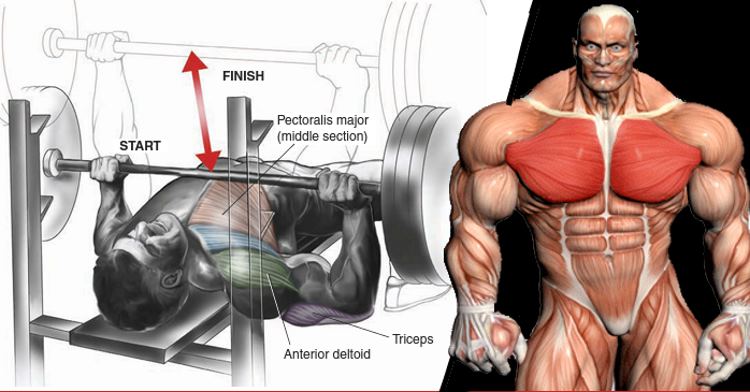Considered the king of upper-body exercises, the bench press should be a staple in your workout routine. This compound exercise can help you build a massive chest while increasing your overall strength. When done properly, it also hits your lats, triceps, shoulders, and abs. It’s one of the primary lifts on which your strength is judged, so you should work on increasing your bench press numbers. Lifting the same weight over and over again won’t help. For a bigger chest and greater strength, add more plates to the barbell and vary the number of sets and reps.
Here are five proven strategies to increase bench press strength:
Assess Your Lifting Technique
Start by assessing your lifting technique. What are your strengths in your lifts? What about your weaknesses? What lifting techniques have given you the best results so far? How often do you work out? Do you train your pecs more than once a week? What are your goals? How much would you want to lift? Answer these questions and then come up with a plan for improving your bench press.
Focus on Your Shoulders and Triceps
Your triceps and shoulders are “secondary” muscle groups involved in the bench press. If these muscles are weak, you won’t be able to reach your fullest potential when training your chest. For the start, use heavier weights when training your shoulders and triceps. Add an additional three to four sets to your workouts for up to one month. Hit your triceps hard with skull crushers and close grip bench press. Use free weights and skip the cable machines. This should increase your overall strength as well as your bench press numbers.
Improve your Technique
Many athletes and gym goers use bad form when bench pressing. This exercise may seem simple, but there are certain rules you need to follow in order to reap its benefits. If you lift heavy weights, proper technique is essential to your safety. It’s important to learn how to perform the movement most efficiently and maximize each set.
Use your whole body in the lift. Keep your back muscles tensed and tuck your shoulder blades as you pull yourself under the bar. Your hips should be in contact with the bench. Drive yourself into the bench using your legs. Grab the bar close to your wrists and squeeze it hard. Keep your chest up throughout the full range of motion. Your back, glutes, legs, and hips should be tight. Do not lose your arch and thoracic extension when locking out your elbows. By using proper form, you’ll be able to lift more weight and avoid injuries.
Shock Your Muscles into Growth
To build a bigger chest, get out of your comfort zone and push yourself as hard as you can. Vary the intensity and frequency of your workouts. If you’ve been training your pecs once a week, hit them twice weekly for a few months. Do a few more sets or reps every time you work out. Vary the rest between sets. Add new exercises to your workout routine and track your progress. The more you shock your muscles, more they will grow
Lift and Eat for Growth
Not even the best workout routine can compensate for bad eating. If you want a massive chest and greater strength, eat for growth. Your diet has a major impact on your body composition and overall physical performance. Know your nutrient timing, increase your protein intake, and load up on carbs. Eat good fats to keep testosterone levels in a healthy range so you can add muscle.
Consider using a mass gainer to add more protein, carbs, and fats to your diet. Aim for at least 1.5 grams of protein per pound of bodyweight every day. Since you’re training for size, add more carbs to your diet. A low carb diet is not the best option when you’re trying to increase bench press strength. Plan your meals ahead of time, calculate your macros, and eat foods that promote muscle growth and repair. Take muscle building supplements to support your gains, such as glutamine, BCAAs, whey protein, and creatine. If you lift and eat for growth, the results will come.
